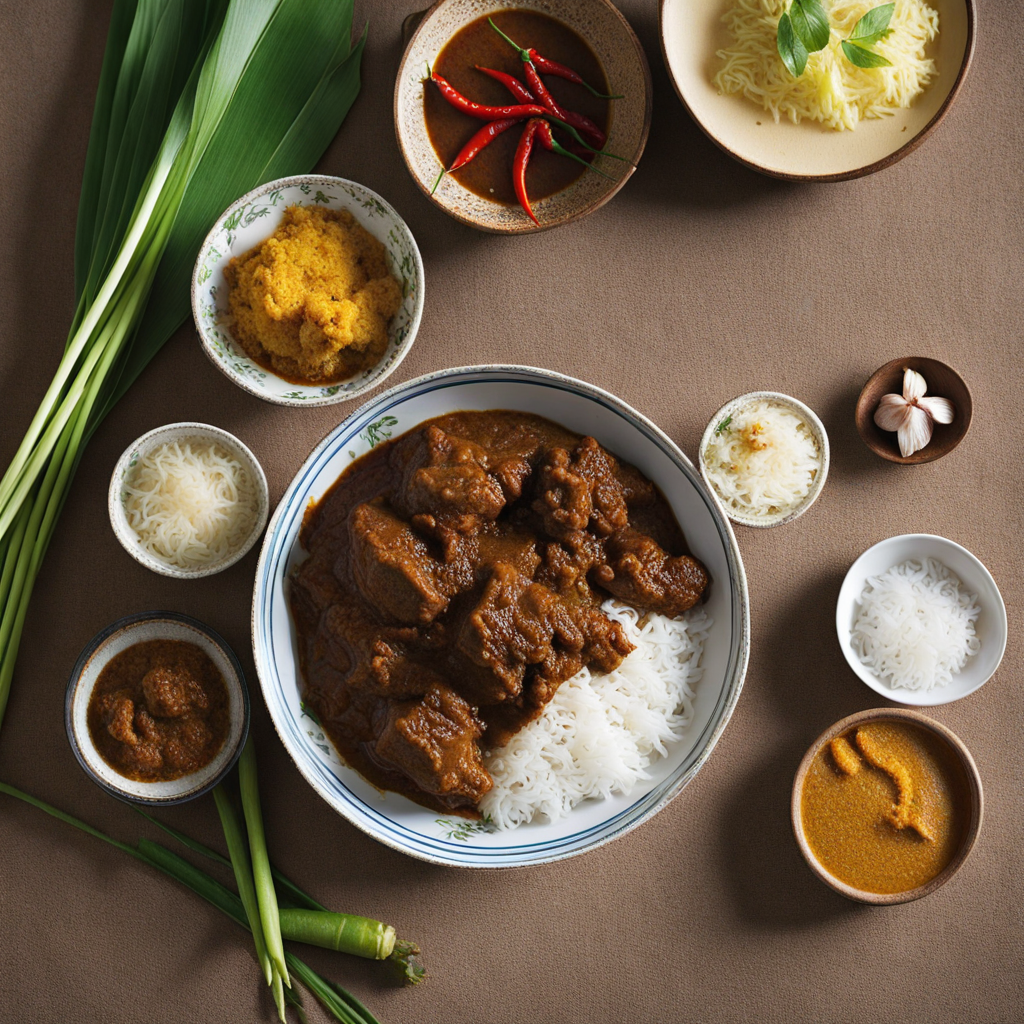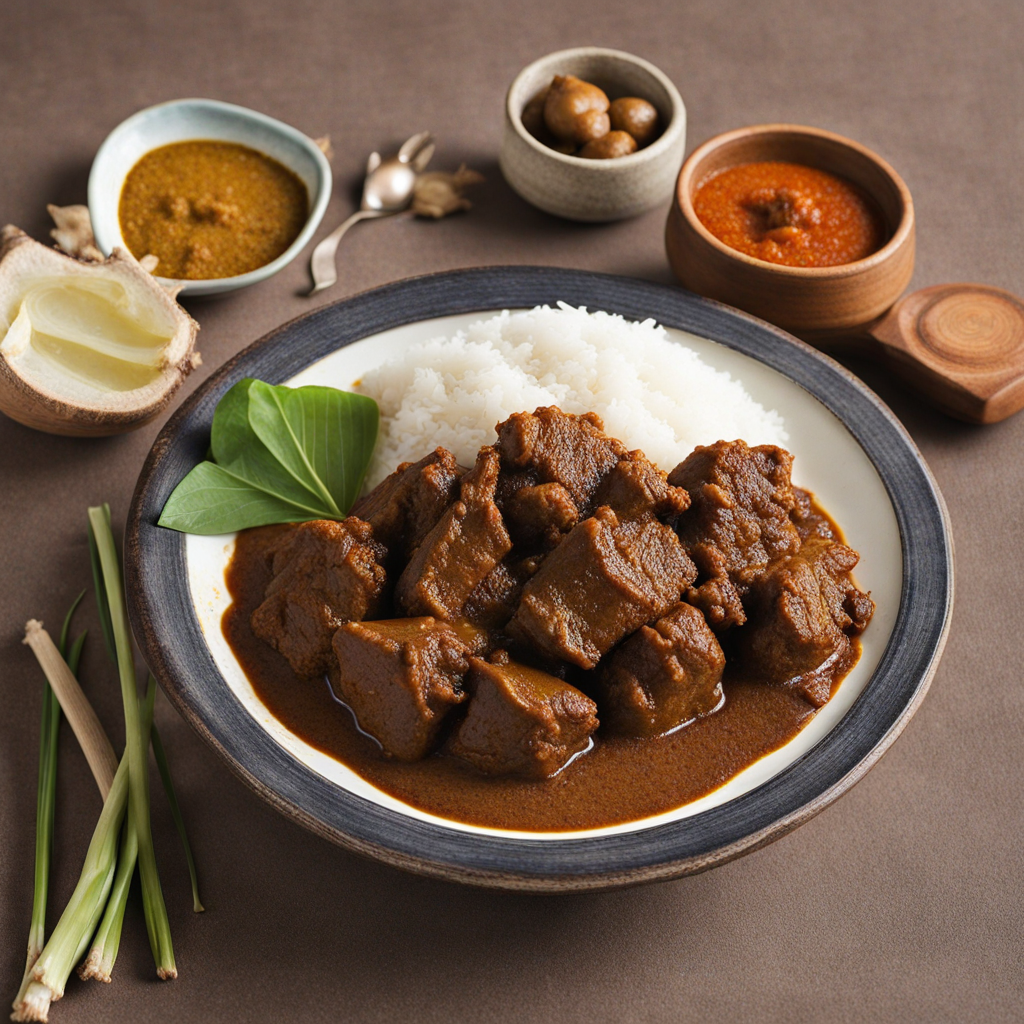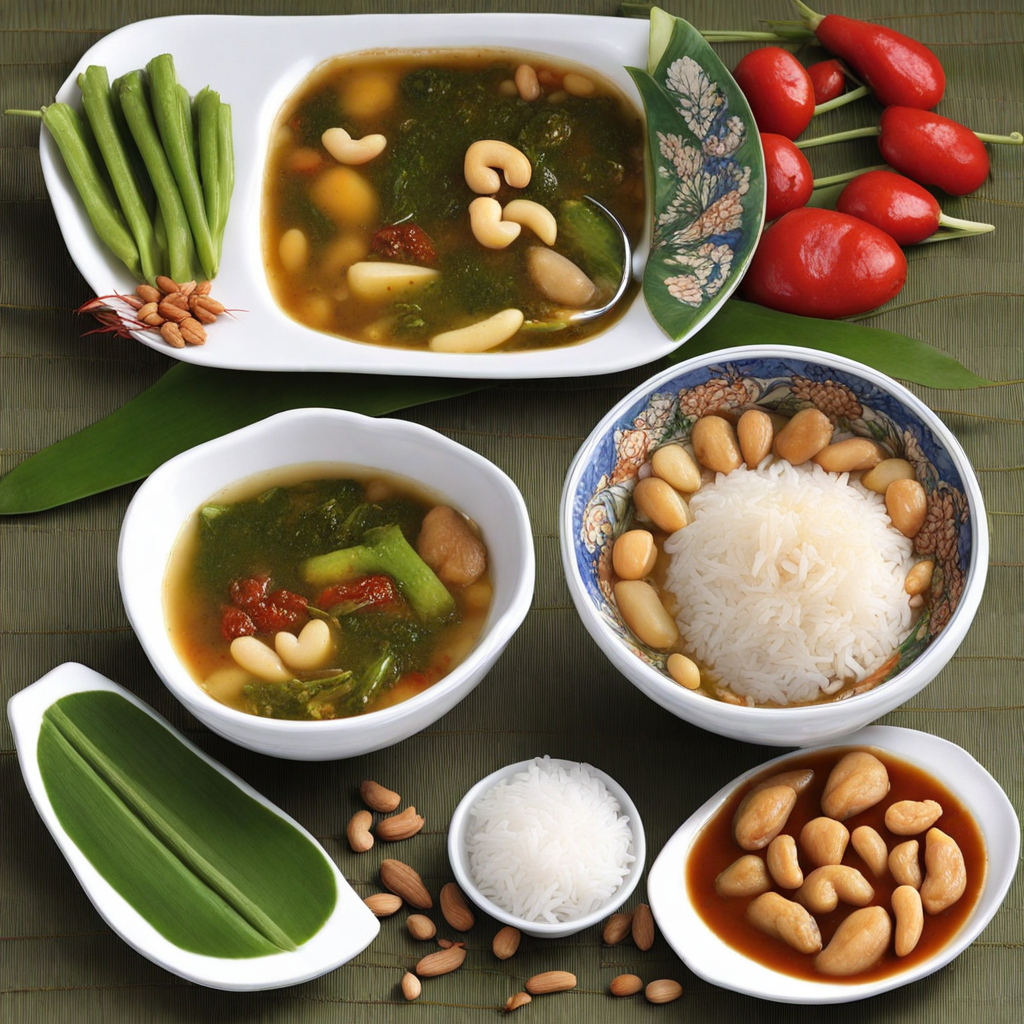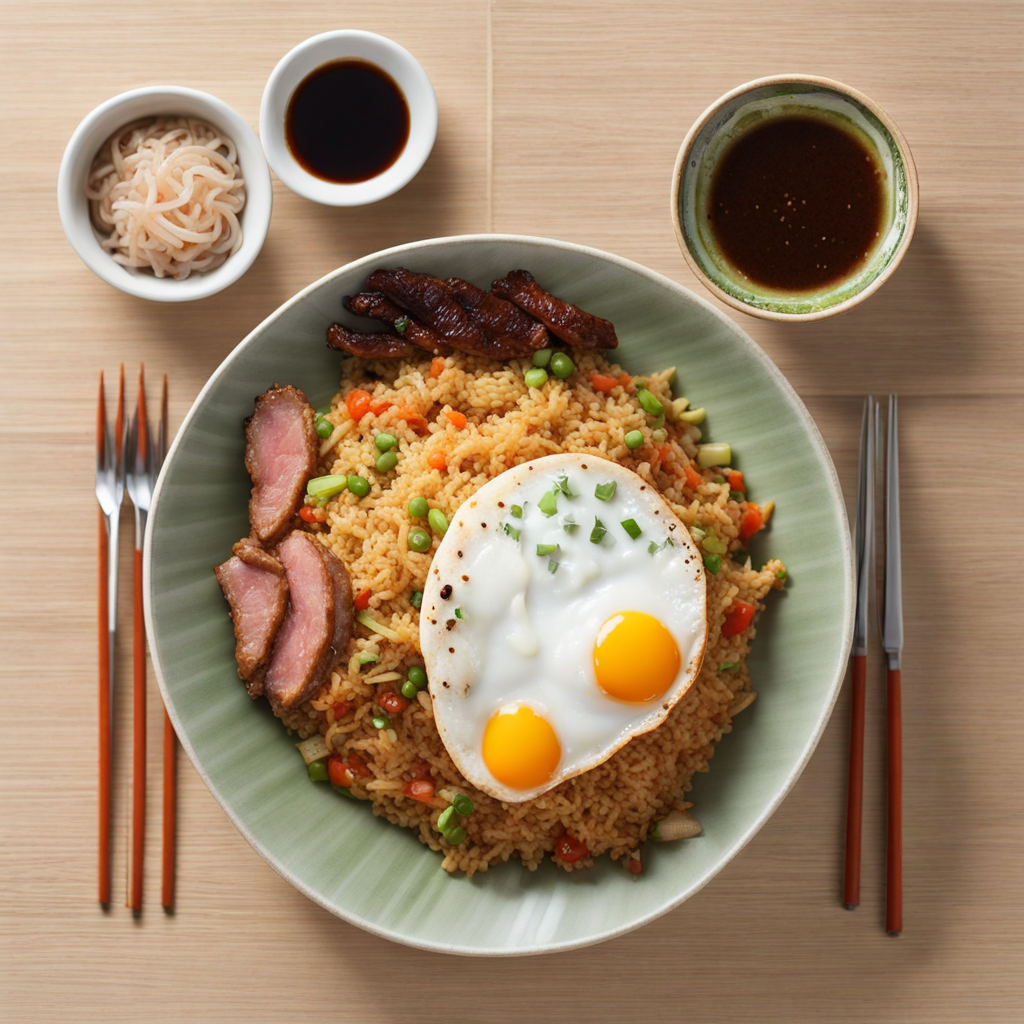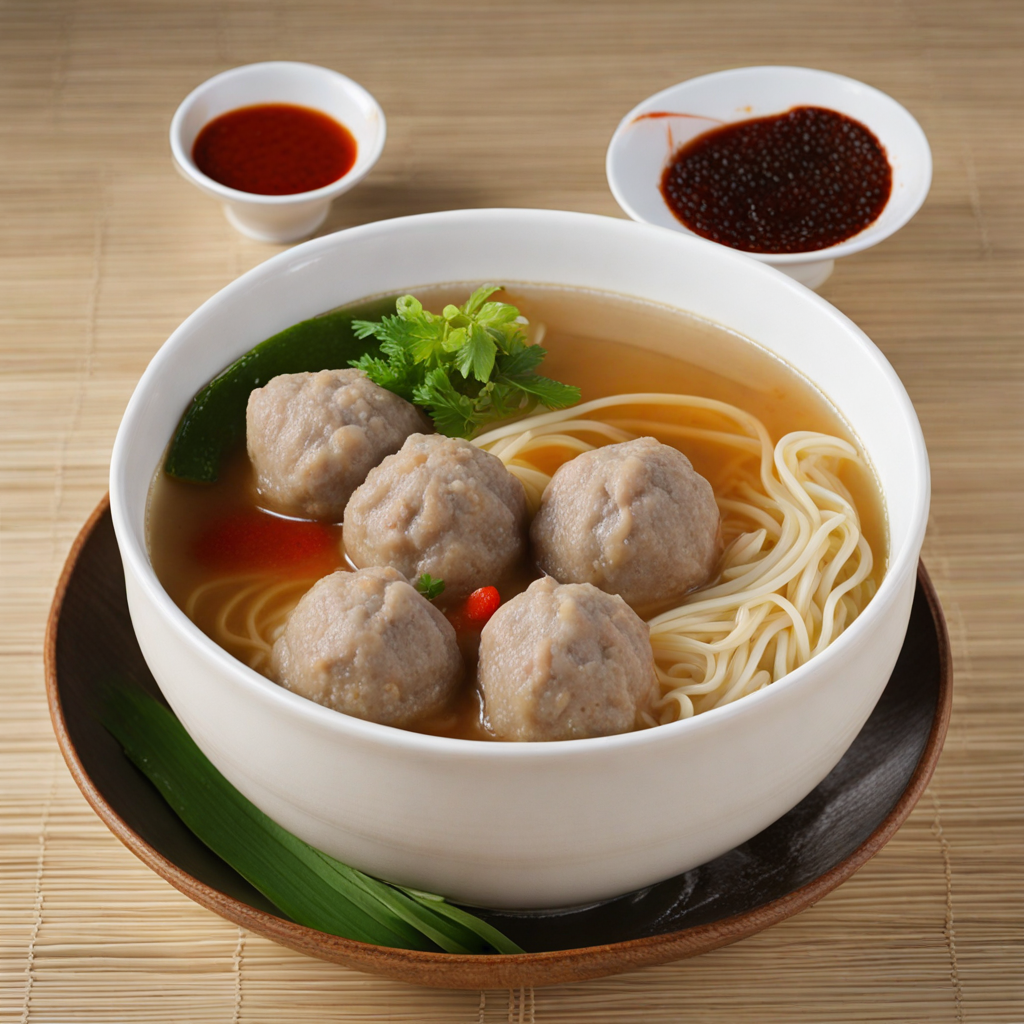Beef Rendang
Beef Rendang is a rich and flavorful Indonesian dish that showcases the culinary heritage of the Minangkabau people from West Sumatra. This slow-cooked beef stew is renowned for its bold flavors, which come from a unique blend of spices including ginger, turmeric, lemongrass, garlic, and chili. The beef is typically marinated and then simmered in coconut milk, allowing the meat to absorb the complex flavors while becoming incredibly tender. The long cooking process allows the spices to meld and intensify, resulting in a dish that is both aromatic and satisfying. As the beef cooks, the coconut milk reduces and caramelizes, creating a thick, savory sauce that clings to each piece of meat. The combination of heat from the chilies and the creaminess of the coconut milk provides a delightful contrast, making each bite a burst of flavor. The dish is often garnished with fresh herbs, further enhancing its vibrant taste profile. Beef Rendang is not just a meal; it’s an experience that transports you to the heart of Indonesia, offering a deep connection to its culinary traditions. Traditionally served at special occasions and celebrations, Beef Rendang is often accompanied by steamed rice, which helps balance the bold flavors of the dish. Each spoonful of the tender beef, infused with spices, paired with the fluffy rice creates a harmonious combination that is both comforting and exotic. For those seeking to explore new tastes, Beef Rendang offers a perfect blend of sweetness, spiciness, and umami, making it an unforgettable addition to any food lover's repertoire.
How It Became This Dish
Origin of Rendang Daging Rendang Daging, often simply referred to as Rendang, is a quintessential dish from Indonesia, specifically associated with the Minangkabau ethnic group from West Sumatra. The dish's origins can be traced back to the traditional culinary practices of the Minangkabau people, who have a rich history of agriculture and livestock farming. Rendang is traditionally made using beef, which reflects the agrarian lifestyle of the Minangkabau, who raised cattle not only for sustenance but also for ceremonial purposes. The earliest records of Rendang can be dated back to the 16th century, during the rise of the Minangkabau kingdom. The dish was originally prepared for ceremonial occasions and feasts, symbolizing wealth and status. It is believed that the preparation of Rendang was influenced by the arrival of Indian and Middle Eastern traders, who introduced spices and cooking techniques that became integral to Indonesian cuisine. Cultural Significance Rendang Daging is not merely a dish; it embodies the rich cultural heritage of the Minangkabau people. The preparation of Rendang is often associated with significant life events, such as weddings, religious celebrations, and other communal gatherings. It is customary to serve Rendang to honor guests, reflecting the Minangkabau philosophy of hospitality, known as "salam" or "salam tempatan." In addition to its role in communal meals, Rendang carries a spiritual significance. The process of cooking Rendang is seen as a form of prayer, with each ingredient chosen for its symbolic meaning. The slow-cooking method allows the flavors to meld, representing unity and harmony within the community. Moreover, the dish has become a symbol of Indonesian identity, transcending regional boundaries and gaining popularity both domestically and internationally. Ingredients and Cooking Techniques Rendang Daging is characterized by its complex flavors and aromatic spices. The primary ingredients include beef, coconut milk, and a blend of spices such as ginger, turmeric, lemongrass, garlic, and chilies. The traditional cooking method involves simmering the beef in coconut milk and spices over low heat for several hours, allowing the meat to become tender and absorb the rich flavors. This slow-cooking technique is essential, as it transforms the dish into a thick, rich curry that is both savory and slightly sweet. The preparation of Rendang varies from region to region, with different communities adding their unique touches to the dish. For instance, in the Minangkabau tradition, Rendang is often cooked until it is dry, allowing the spices and coconut milk to caramelize and create a deep, rich color. In contrast, other Indonesian regions may serve Rendang with more sauce, reflecting local culinary preferences. Development Over Time Throughout the years, Rendang has evolved in response to changing culinary practices and regional influences. The spread of Islam in Indonesia during the 15th century played a significant role in shaping the dish, as Islamic dietary laws encouraged the use of halal ingredients. As a result, Rendang became a staple in Muslim communities, often served during religious festivities like Eid al-Adha. In the 20th century, the globalization of food culture began to influence the preparation and presentation of Rendang. As Indonesian migrants settled in various countries, they brought their culinary traditions with them. This led to the emergence of fusion renditions of Rendang, incorporating local ingredients and cooking styles. For example, some chefs in Western countries experiment with different cuts of meat or vegetarian versions of the dish to cater to diverse palates. Moreover, Rendang gained international recognition in 2011 when CNN Travel named it the "World's Most Delicious Food." This accolade brought global attention to Indonesian cuisine and elevated Rendang's status as a cultural icon. Restaurants around the world began to feature Rendang on their menus, introducing this flavorful dish to new audiences. Modern Rendang Variations Today, Rendang has numerous variations that reflect the culinary diversity of Indonesia. While the traditional beef Rendang remains the most celebrated, other iterations include chicken, lamb, and even vegetarian options made with tofu or jackfruit. Each variation showcases the adaptability of the dish, allowing it to cater to different diets and preferences while maintaining its cultural roots. In addition to mainstream adaptations, regional variations of Rendang continue to thrive. For instance, in Padang, the capital city of West Sumatra, a spicier version is prepared, often with an abundance of chilies. Meanwhile, the Javanese version may include sweeter elements, using palm sugar to balance the spices. These regional differences not only enrich the culinary landscape of Indonesia but also serve as a testament to the dish's cultural significance. Rendang in Contemporary Culture In recent years, Rendang has found its place in contemporary culinary culture, with chefs and food enthusiasts exploring innovative ways to present this traditional dish. Food festivals, cooking shows, and social media platforms have played a crucial role in promoting Rendang, showcasing its versatility and cultural significance. Home cooks and chefs alike engage in friendly competitions to create the perfect Rendang, each adding their personal touch to the age-old recipe. Moreover, Rendang has become a source of national pride for Indonesians, often featured in discussions about the country's culinary heritage. The dish is a popular choice for food bloggers and influencers who aim to educate people about Indonesian cuisine. Through these platforms, Rendang is celebrated not just for its taste, but also for its history and the stories it carries. Conclusion Rendang Daging stands as a symbol of Indonesia's rich culinary heritage, encapsulating the history, culture, and traditions of the Minangkabau people. Its evolution over time reflects the adaptability and resilience of Indonesian cuisine, allowing it to thrive in a globalized world. As Rendang continues to capture the hearts and palates of food lovers worldwide, it remains a testament to the enduring legacy of Indonesian culture and the importance of food in fostering community and connection.
You may like
Discover local flavors from Indonesia


